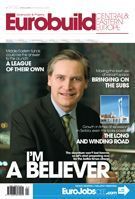The Serbian real estate market’s 15 minutes of fame are not over. The global crisis is clearly affecting the country’s progress, but the long-term figures still look promising. We are here to stay, the majority of the international players declare. Here is why Mladen Petrov At a business mixer at the Warsaw Hyatt Regency hotel, three businessmen in sharp suits, with pints of Guinness in their hands – it’s St Patrick’s day after all – are talking business. “I’ve just returned from Serbia,” seems to be the perfect conversation opener. The two most used words during the conversation are growth and opportunities. Someone mumbles for a second about the red-tape in Serbia. Sounds promising, is the general conclusion. But do these words – growth and opportunities – still accurately describe the Serbia of April 2009? It seems tha






























































